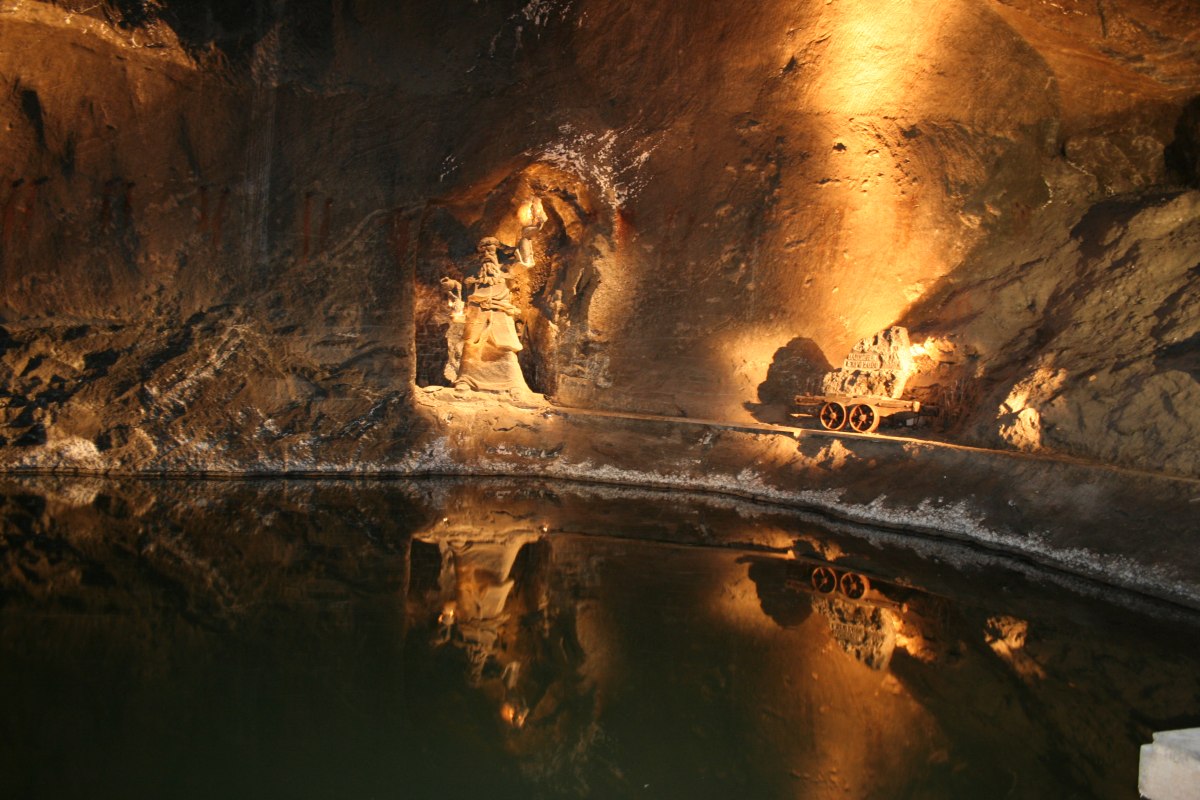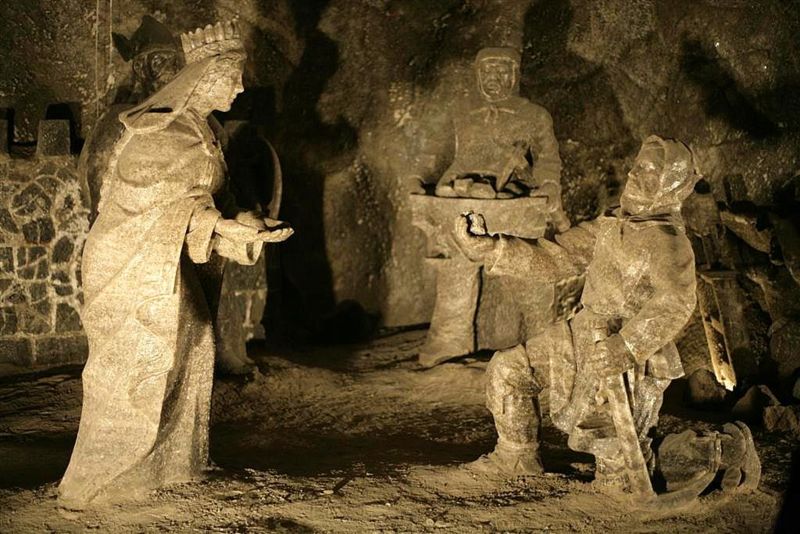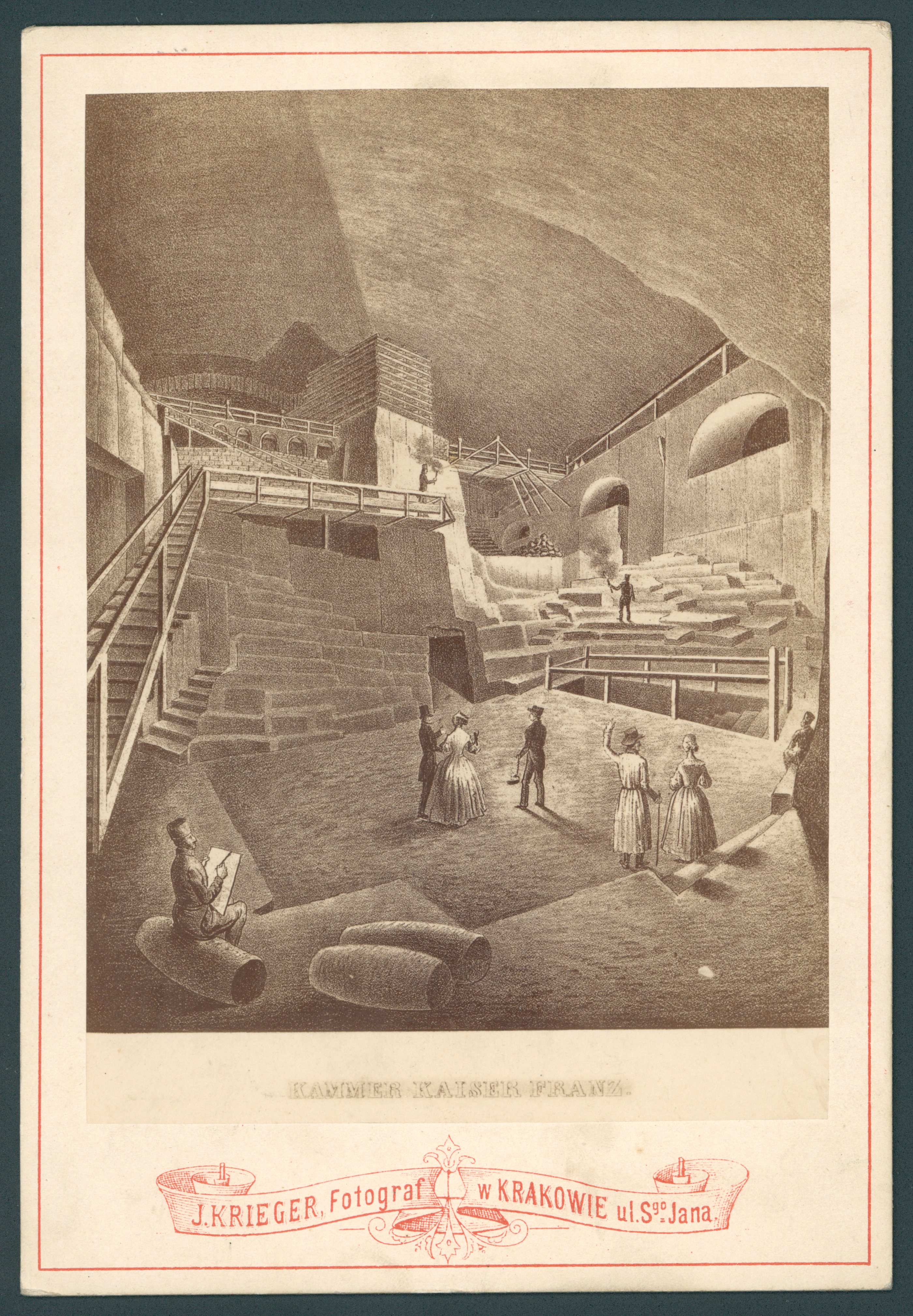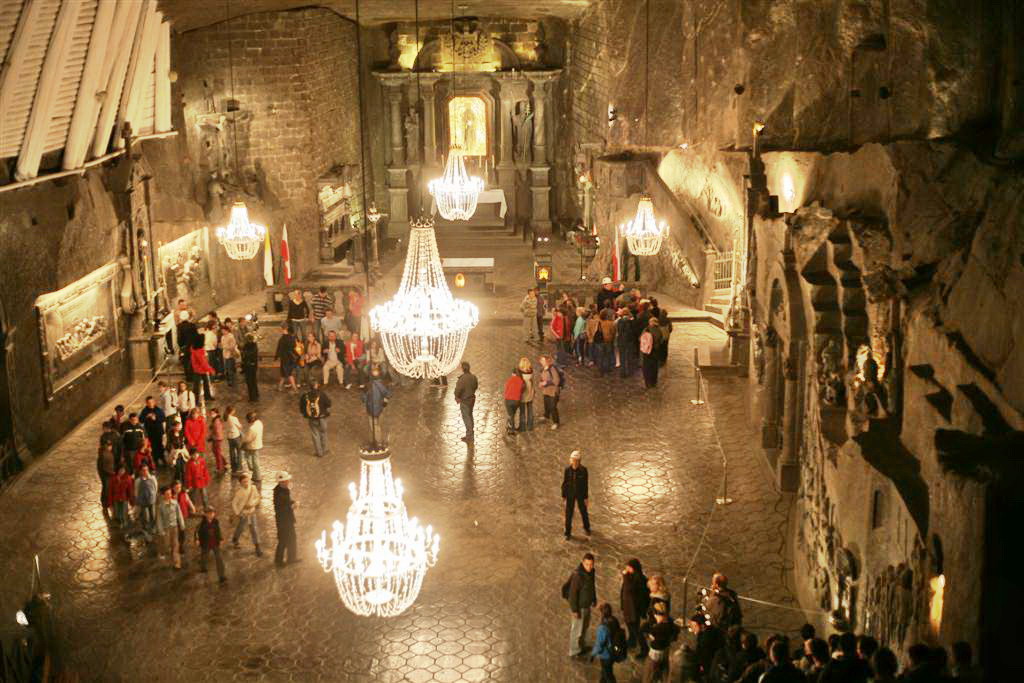


For many school trips from all over Poland, a mandatory stop during the visit to Krakow is the Wieliczka Salt Mine. What does this place hold that most teachers feel obliged to show it to their students? To better understand the phenomenon of the Wieliczka mine, we have to go back in time several centuries, to the times of territorial fragmentation and the rule of Duke Bolesław V the Chaste.

Wieliczka Salt Mine - Weimar Chamber; Marek Czerwiński Kornatka, CC BY 2.5, via Wikimedia Commons
According to the legend, the beginning of salt mining in Wieliczka is connected with the royal marriage of the Lesser Poland Piast – Bolesław, known as the Bashful. This prince married the daughter of the Hungarian king, Kinga, also known as Kunigunda. According to the same legend, Kinga threw her engagement ring into one of the shafts of a Hungarian salt mine. Allegedly, Kinga heard about salt shortages in her future husband's country, and this gesture was meant to change that unfavorable situation. When the Hungarian princess crossed the Carpathians and reached the borders of her new homeland, she was welcomed by Bolesław and taken in a solemn procession towards Krakow. However, at some point, Kinga ordered the procession to stop, and then pointed to a spot where servants immediately began to dig. The gathered crowd was surprised when they discovered that in the designated place, there was the princess's engagement ring, and beneath it, a rich deposit of salt. In this way, Kinga contributed to the prosperity of her new homeland and the creation of one of the most famous mines in this part of Europe.

A salt sculpture of Saint Kinga and miners in the Wieliczka salt mine, illustrating the legend of Saint Kinga's ring; Cezary Piwowarski, CC BY-SA 3.0, via Wikimedia Commons
Legend is a legend, but modern archaeology points to much older traces of salt extraction in the Wieliczka region. Scientists believe that initially, salt was obtained from naturally occurring saltwater springs in the area. This salty solution was collected, purified, and then boiled until salt crystals separated from the liquid. The first traces of conscious and deliberate use of salt springs date back to the Neolithic period, around 3,000 years BC. This is evidenced by the tools used for boiling salt that were discovered after World War II. Scientists believe that salt was extracted in this way until the turn of the 12th and 13th centuries when these sources began to dry up.
It was during the period of territorial fragmentation that the search for salt deposits around Wieliczka began, following the traces of earlier salt springs. The first shaft enabling the extraction of rock salt was created in the nearby town of Bochnia. It didn't take long for salt-bearing veins to be discovered in Wieliczka itself. The first shafts, corridors, and chambers were carved out, laying the foundations for the creation of the most famous salt mine in Poland.

Wieliczka Salt Mine, print (1886), Ignacy Krieger; LoMit, CC BY-SA 4.0, via Wikimedia Commons
Subsequent rulers of Krakow were well aware of the significance of the Wieliczka salt mine. Revenues from the so-called salt mines constituted a considerable portion of their income, which is why they felt obliged to provide special care for the miners working there. At the end of the 13th century, Duke Henryk IV Probus of Wrocław and Krakow ordered the construction of baths in Wieliczka, which were intended to serve as a kind of medical clinic for the miners. At the same time, assistance institutions were established there for victims of mining accidents, as well as for widows and orphans of miners. In 1363, King Casimir III the Great founded a hospital run by the Order of the Holy Spirit near the mine. It is also worth noting that in the 17th century, a woman, Magdalena Bendzisławska, became the first female mine barber (a person responsible for medical assistance to miners) in Poland.
In the 1870s, Wieliczka was recognized as the most efficient salt mine in the world. The complex had significantly expanded since the time of Saint Kinga, and in the second half of the 19th century, it had over seven levels, reaching a depth of over 250 meters into the ground. Even then, the touristic potential of the mine was discovered, and not only miners but also curious travelers started descending underground to explore this unique place. At times, miners focused more on guiding tourists and collecting tips than on their regular work.

Wieliczka Salt Mine; Cezary p, CC BY-SA 3.0, via Wikimedia Commons
Years passed, and the fame of the Wieliczka salt mine continued to grow. The number of tourists visiting its underground corridors also increased. The rising profits from tourism, as well as the desire to preserve the unique historical monuments and the microclimate of the mine, led the mine's authorities to cease salt extraction using mining methods in 1996. The Wieliczka Salt Mine transformed into a living, ever-evolving museum, attracting crowds of tourists from Poland and abroad.
For all those interested in the incredibly rich history of Krakow and its surroundings, we encourage you to take advantage of our wide range of tours, which will allow you to immerse yourself in history and touch what many have considered forgotten.